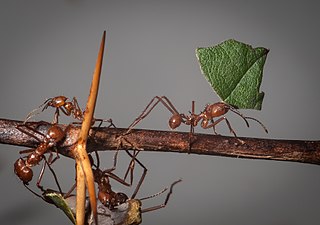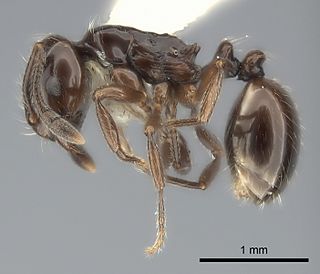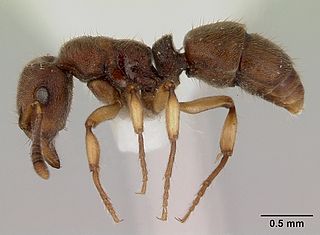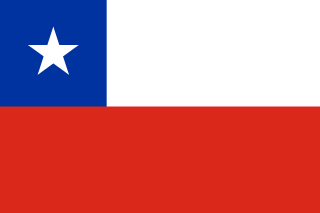
Myrmicinae is a subfamily of ants, with about 140 extant genera; their distribution is cosmopolitan. The pupae lack cocoons. Some species retain a functional sting. The petioles of Myrmicinae consist of two nodes. The nests are permanent and in soil, rotting wood, under stones, or in trees.

Monomorium bidentatum is a species of ant in the subfamily Myrmicinae. It is endemic to two South American countries, Chile and Argentina.

Crematogaster is an ecologically diverse genus of ants found worldwide, which are characterised by a distinctive heart-shaped gaster (abdomen), which gives them one of their common names, the Saint Valentine ant. Members of this genus are also known as cocktail ants because of their habit of raising their abdomens when alarmed. Most species are arboreal. These ants are sometimes known as acrobat ants.

Crematogastrini is a tribe of myrmicine ants with 64 genera and 8 fossil genera.
Monomorium denticulatum is a species of ant in the subfamily Myrmicinae. It known from Chile and Argentina. Like M. bidentatum it was first described from Valdivia, Chile.

Acanthognathus is a genus of ants that are found in tropical Central and South America. There are 7 living species and 1 extinct species, Acanthognathus poinari, known only from fossil records.

Dolichoderus is a genus of ants found worldwide.

Heteroponerinae is a subfamily of ants in the poneromorph subfamilies group containing three genera in one tribe. The subfamily was created in 2003 when Barry Bolton divided the Ponerinae subfamily into six subfamilies.

Acanthognathus ocellatus is a species of ant belonging to the genus Acanthognathus. Described in 1887 by Mayr, the species is native to South America and other regions.

Heteroponera carinifrons is a species of ant in the genus Heteroponera, endemic to Chile. It was described by Mayr in 1887.
Heteroponera crozieri is a species of ant in the genus Heteroponera endemic to Australia. Described in 2011, the workers look similar to those of Heteroponera leae, although H. leae ants are more southerly distributed.

Heteroponera flava is a species of ant in the genus Heteroponera. Endemic to Brazil and Paraguay, it was described by Kempf in 1962.

Heteroponera inca is a species of ant in the genus Heteroponera. Endemic to Colombia, it was described by William Louis Brown Jr. in 1958.
Heteroponera leae is a species of ant in the genus Heteroponera. It is endemic to Australia, and was described by Wheeler in 1923. It has a similar appearance to Heteroponera crozieri ants, although H. crozieri ants are more northerly distributed.
Heteroponera majeri is a species of ant in the genus Heteroponera. Endemic to Australia, it was recently described by Taylor in 2011. Its appearance is far different to other Heteroponera species that reside in Australia.

Heteroponera mayri is a species of ant in the genus Heteroponera. Endemic to Brazil and Paraguay, it was described by Kempf in 1962.

Heteroponera microps is a species of ant in the genus Heteroponera. Endemic to South America, it was described by Borgmeier in 1957.
Heteroponera robusta is a species of ant in the genus Heteroponera. Endemic to Brazil, it was described by Kempf in 1962.













